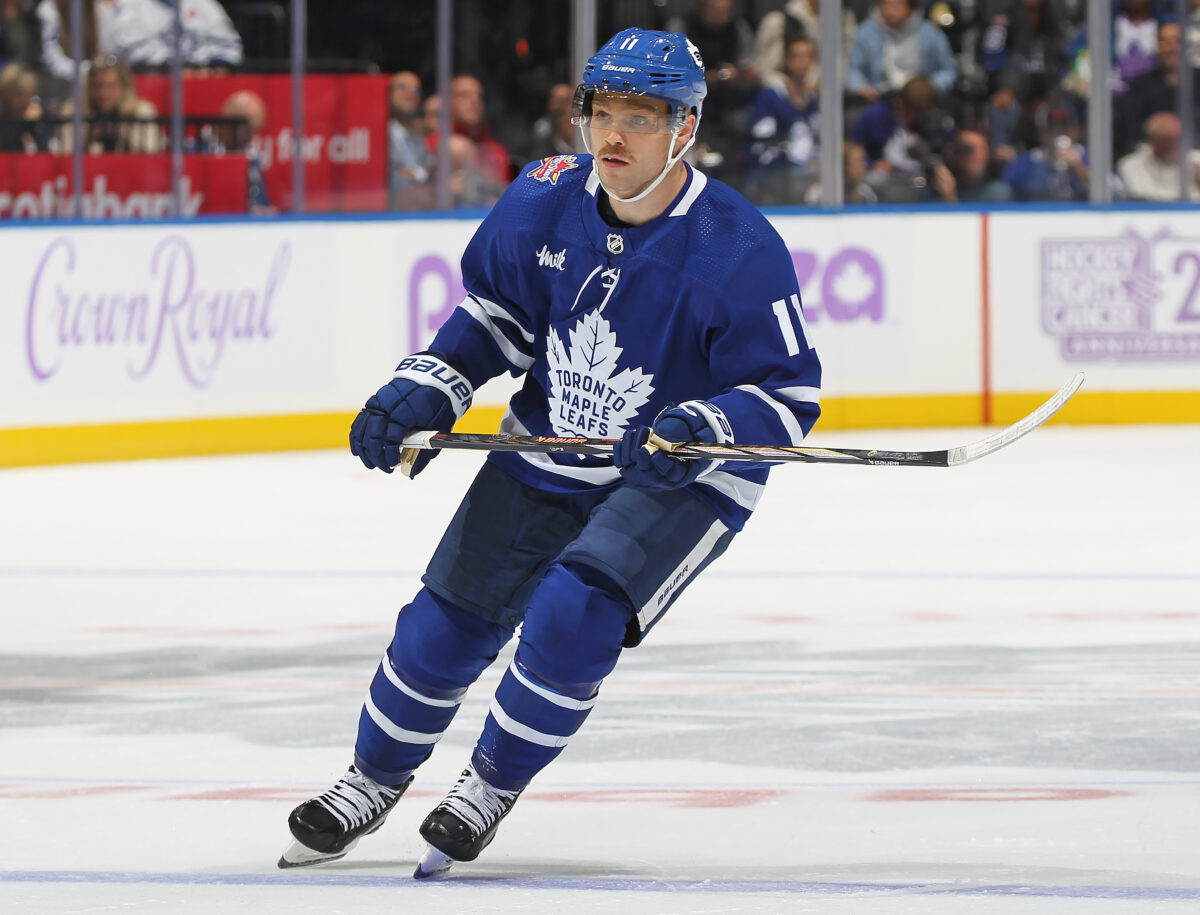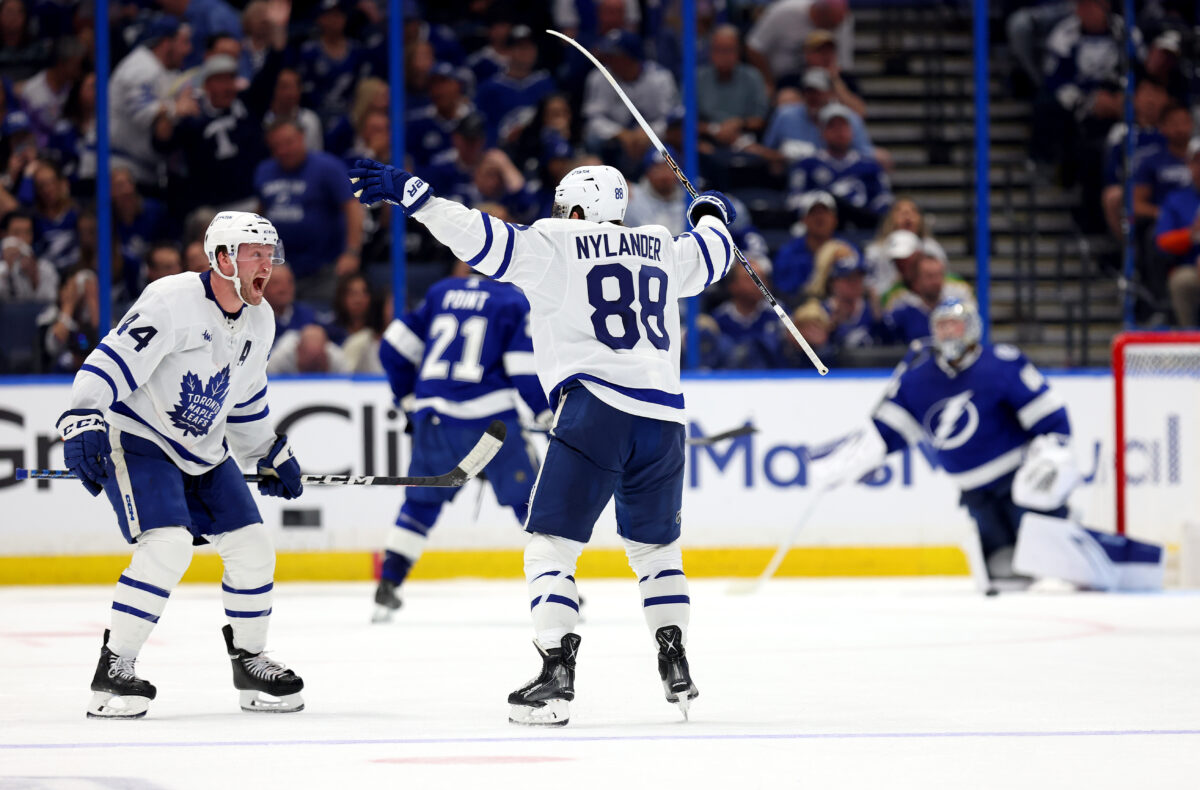The Toronto Maple Leafs, despite the media’s negative emphasis on too many overtime games and too few wins in regulation, are sitting pretty well in divisional and conference standings. While they are not having a great season thus far, they are hanging in there.
That fact is not lost on head coach Sheldon Keefe, who noted the other day: “at the end of the day, this is a really hard league to get points in. I just looked before I came in. I think there are 23 teams below us in the standings right now, and we haven’t played our best hockey. We are in a pretty good place while we continue to work through the things that we have to improve on.”
Related: What Patrick Marleau Taught Mitch Marner & Auston Matthews
With only six regulation losses in 22 games, the Maple Leafs have accumulated 28 points out of 44, equivalent to 63.6% of available points. They are positioned well in the Eastern Conference. Yet, there’s an ongoing narrative surrounding the team’s perceived struggles. Given the team’s competitive standing and overall performance, it seems the team is trending on a positive trajectory.
Also, given the constructed narrative over the past few seasons that only the postseason counts, it seems a bit contradictory to me that there’s so much angst around where the team sits – as long as they make the postseason. In this post, there’s an underlying assumption that some of the changes the Maple Leafs have engaged in are taking time to develop fully into the team’s system. Furthermore, these changes have a long-term goal of helping the team become more competitive in the postseason. The team is, as a result, a work in progress.
There’s Something Different About the Maple Leafs This Season
Still, there’s something different about this team. In a recent video that features hockey analysts Elliotte Friedman and Kevin Bieksa, they analyze some of the changes the Maple Leafs have undergone in their style of play for the 2023-24 season. (To see and hear what they are saying, click the video below.)
One significant shift they note is observed in the team’s defensive performance, where the team’s rankings in rush chances against, slot shots against, and inner slot shots against have seen a decline compared to last season. Last season, the Maple Leafs were a middle-of-the-pack team in these defensive metrics. However, this season, they rank 22nd in rush chances against, 28th in slot shots against, and 27th in inner slot shots against.
Related: Maple Leafs’ Samsonov Shows Human Side of Professional Sports
Offensively, the Maple Leafs continue to deploy a possession-style game, especially when key playmakers like Mitch Marner, William Nylander, Auston Matthews, and John Tavares are on the ice. These players excel at making plays through the neutral zone, involving defensemen in the rush to create scoring opportunities.
The Maple Leafs Are Engaging in a More Direct (Dump-and-Chase) Style of Play
However, there’s a noticeable addition of a more direct style of play, particularly with the third and fourth lines. The team’s bottom two lines are engaging a more direct approach, which involves getting pucks in deep, forechecking aggressively, and making life difficult for opponents in the offensive zone. It’s more in line with a dump-and-chase game reminiscent of the game most prevalent and played about 25 years ago.

(Photo by Claus Andersen/Getty Images)
Those fans who have been around for a while will recall that, during the late 1990s and early 2000s, many NHL teams played what was called a “dump and chase” system. The strategy involved the offensive team working to shoot the puck into the opposition’s defensive zone and racing to gain control of the puck in their offensive zone.
Here’s how it worked. When the puck changed hands in a team’s defensive zone, and a defending player initiated the transition, that player, typically from the neutral zone or just across the offensive blue line, deliberately shot or “dumped” the puck into the opposing team’s defensive zone. The aim was to get the puck deep into the offensive zone. Then, immediately after dumping the puck, the team chased the puck into the offensive zone, forechecking and pressuring the opposing team’s defensemen.
Related: The Sad Reality of the Presidents’ Trophy “Curse”
Then, the team’s forwards, who dumped the puck, aggressively forechecked opposing defensemen and attempted to gain possession. The idea was to disrupt the opposing team’s breakout, force turnovers, or create scrambly play. Finally, if the puck was recovered, the team could then set up offensive plays, create scoring chances, or cycle the puck to create offensive pressure on the defending team.
The dump-and-chase strategy was often used when a team believed it could outskate its opponents or when it wanted to wear down the opposing defensemen. Given the Maple Leafs’ depth lines – a third line featuring Calle Jarnkrok, Nick Robertson, and Max Domi and a fourth line of David Kampf, Noah Gregor, and Bobby McMann, it can be an effective tactic if it’s used well. It forces opposing teams to make quick decisions under pressure, potentially leading to turnovers and scoring chances.

(Photo by Claus Andersen/Getty Images)
However, its success depends on the speed and tenacity of the forwards executing the strategy. That’s why, in my opinion, McMann’s speed is more valuable than Ryan Reaves’ toughness on the fourth line. Both depth lines need to be fast enough on the puck to make the strategy work.
Friedman and Bieksa Outlined The Issues the Maple Leafs Were Working Through
During the discussion on the video, both Friedman and Bieksa noted that, despite the shift, the Maple Leafs still were trying to maintain the ability to generate offense, albeit with a higher percentage of blue-collar, hardworking depth players. Although they didn’t say it, they were alluding to the way the Maple Leafs were constructed as a team. The top two lines are made up of elite players, and the bottom two lines are either newer players or the kind of hard-working blue-collar players who can be had for close to NHL league minimum salaries – of which Gregor is a perfect example.
A list of key points made by Friedman and Bieksa regarding the changes in the Maple Leafs’ style of play for the 2023-24 season includes the following:
First, the team continues to engage in a possession-style game, especially when its key playmakers (Marner, Nylander, Matthews, Tavares – and the inclusion of Matthew Knies) are on the ice. The top two lines continue their emphasis on making plays through the neutral zone and involving defensemen in the rush to create scoring opportunities.
Related: Today in Hockey History: Dec. 4
However, with its bottom two lines, the Maple Leafs are engaging a more “direct style.” That style involves getting pucks deep, aggressive forechecking, and making life tough for opponents in the offensive zone. That style tries to take advantage of the team’s speed and aggressiveness to generate offense with a higher percentage of blue-collar, hardworking players.
The result is that the Maple Leafs are deploying a combination of two styles. This dual-style approach attempts to combine their trademark possession game with a more direct and aggressive style. One reason for the shift in style is that it would be better tailored for success in the playoffs.

(Photo by Mike Ehrmann/Getty Images)
The key points engaged by Friedman and Bieksa offer Maple Leafs’ fans insights into the offensive adjustments the Maple Leafs are working to engage this season. Perhaps the changeover is a reason that the team has had a bit of a struggle out of the starting gate. It takes time to change a way of playing.
However, given the focus of the team on winning in the postseason, this strategic blend of styles could work to enhance the team’s improvement in its overall gameplay.
